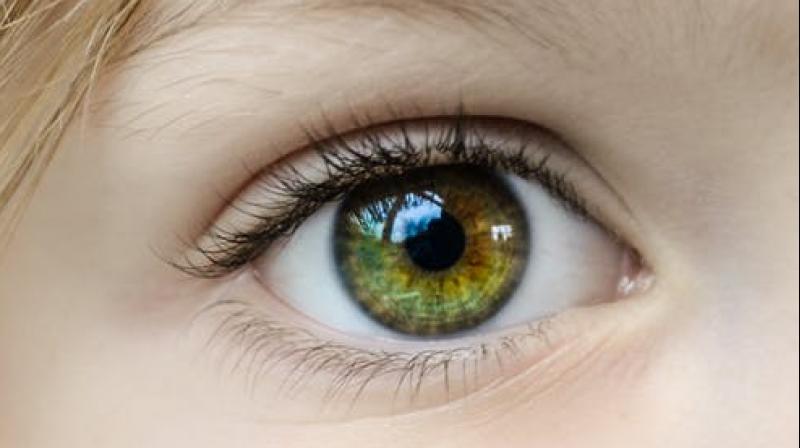India suffers from severe burden of blindness

India suffers from a significant shortage of donor corneas along with a waiting period of over six months for corneal transplants among patients suffering from corneal blindness across the country. Blindness maybe a result of several conditions like cataract, refractive error, glaucoma, age-related macular degeneration, diabetic retinopathy and corneal blindness that stands as the 4th leading cause of blindness across the world.
At present, India is facing a whopping burden of blindness due to corneal diseases for which, a corneal transplant is an efficient cure. Around 6.8 million people in the country have poor vision in at least one eye and about one million people have poor vision in both the eyes due to some kind of corneal disorders shows a recent government-based report.
Not just that, the same report highlights that by 2020, India will suffer from about 10.6 million cases of unilateral corneal blindness. At present, the country has 1,20,000 people affected with corneal blindness and an additional 25,000 to 30,000 people are already blind due to the same. Despite the requirement of about 2,50,000 corneas every year in order to meet the high incidence of corneal blindness in the country, the total number of corneas donated per year is as low as 25,000.
Unfortunately, the country suffers from a huge backlog of 2,25,000 donated corneas every year. Marking the celebration of National Eye Donation Fortnight from August 25th till September 8th, it is essential to be aware of the factors behind the dearth of eye donors and inadequate eye donation in the country and encourage one and all to pledge their eyes and gift a new life. Dr Ashwin Santosh Shetty, Consultant – Ophthalmology, Aster CMI Hospital talks about the factors leading to inadequate eye donors and donations and many more.
What leads to inadequate eye donors and donations?
Prevalent misconceptions and unawareness among people and inadequate and ill-equipped eye banks are some of the primary reasons behind the dearth of donors and donation. A section of our population believes in the religious myth of not attaining salvation after death once the eyes are harvested. Such beliefs restrict a large number of people from donating their eyes. The infrastructure for corneal donation is also not adequate in the country.
It is mandatory to collect the cornea at the right time, store it properly and transplant it at the earliest. The lesser the time between tissue harvesting and transplant, the better is the outcome. The focus should be given on cornea harvesting in Tier 2 and Tier 3 cities as they are observed to have the least tissue harvest. This is mostly because of the lack of sufficient eye bank units and corneal specialist surgeons in these areas.
Facts about eye donation
In order to tackle prevalent unawareness and bust the existing myths, one must be aware of the procedure of eye donation, how it takes place, who can be potential eye donors and get the facts right. One can donate the eyes only after death and within 4 to 6 hours of death, the eyes must be removed by only a registered medical practitioner. The eye bank team needs to visit the home of the deceased or the hospital to remove the eyes. Eye removal does not delay or interfere in the funeral as it takes about 20 to 30 minutes for getting the entire process done. A small quantity of blood is taken to rule out communicable diseases of any kind. Removal of eyes does not cause disfigurement and does not hurt any religious sentiments. Also, the identities of both the donor and the recipient are kept confidential.
Anyone irrespective of age group and gender can donate eyes. Those wearing spectacles, or suffering from diabetes, high blood pressure, asthma and those without any kind of communicable diseases can be potential eye donors. Those suffering from AIDS, Hepatitis B and C, Rabies, Septicaemia, Acute Leukemia, Tetanus, Cholera and infectious diseases like Encephalitis and Meningitis cannot donate their eyes.
In order to ensure the best condition of the retrieved tissue, surgical removal of eyes is conducted soon after death. The cornea transplant is performed within 4 days following the donation and this depends on the method of cornea preservation. The donor’s family does not pay or receive any fees for eye donation as it is prohibited by law. The cost associated with eye procurement is dealt with by the eye bank.
A multi-pronged approach is required to help India overcome the dearth of sufficient eye donors and the eye donation rate. Conducting awareness programs and educating the masses on the importance of eye donation will not be enough. Besides awareness programs, it is a must to have a well-equipped infrastructure facilitating hassle-free eye donation and proper utilization of the harvested tissues.
The government should also focus on coming with an adequate number of eye bank and corneal transplant units equivalently spread across the Tier 2 and Tier 3 cities as well along with getting more ophthalmologists and corneal specialized surgeons across these hospitals.

